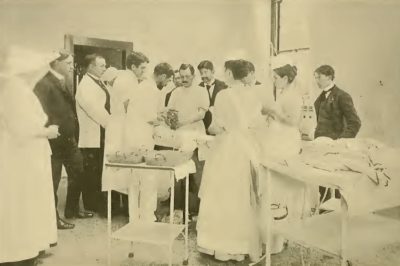Ugly Law: When the US Banned Unsightly Individuals from Coming Out in Public
Share

Artwork of three ugly men. (Wellcome Collection)
Laws are meant to protect the society from crimes and misdemeanours, but believe it or not there were certain laws back in history, just created to deprecate the disabled and the underprivileged people in the US and elsewhere.
History has records of some of the strangest laws implemented to denigrate the lower sections of the society, known as the “Ugly Laws”. Unfortunately, some societies have gone beyond their limits to create some stringent laws to maintain the norms of society.
From the mid-1700s to the 1970s some of the well-known cities of the world had prevalent public laws meant to subjugate the underprivileged class who were rendered pariah and considered “useless” for the society.
In 1881 Chicago alderman James Peevey declared one of these ridiculous laws, in which the diseased, blind, maimed, blind and mutilated were prohibited from making any public appearances. Since the late 19th century to the 20th century physically impaired people were restricted from begging on streets as they were believed to bring upon “shame to the society”. Similar laws were also prevalent in the Philippines and the United Kingdom when disabled people were restricted from making public appearances.
Term ugly law
The term “Ugly laws” was first ever coined by disability activists and authors Maria (MARCIA) Pearce Burgdorf and Robert Burgdorf. These ugly laws depict the harsh reality of the deeply rooted evils of the society which existed in earlier days.
In a book written by Professor Susan M. Schweik, we get a glimpse of how these bizarre laws depicted the conditions of disability and how the cultural influx from different nations put pressure on the existing communities and followed by lack of resources and infrastructure to support the new residents.
This left the new members impoverished as they were forced to share space and resources with the erstwhile residents and thus relegated to the status of “unwanted people” whose presence in public was considered inappropriate.
Responding to the abrupt increase in the population poor people the local officials, ministers, charitable organizations and city planners across the US were compelled to draft ugly laws to control these downtrodden people.
Effect of ugly laws
These queer ordinances imposed the strict adherence to unwanted exposure of disabled, distorted, amputated or unsightly parts of the body.
Chicago is said to be the origin of the ugly laws, though San Francisco later earned the dubious distinction to first promulgate the ugly laws in America. Inspired by this action these laws were later implemented in different parts of the country.
Citing the Ugly law clauses, Chicago alderman James Peevy was quoted in the Chicago Tribune of May 19th, 1881 as saying, “Its object is to abolish all street obstructions.”
New Orleans, Louisiana first enforced its ugly law in the year 1883, whereas Portland Oregon enacted its ugly law in 1881. Similar laws were enacted in Ohio, Pennsylvania, Nebraska which identified groups of people in public deemed as “unsightly” and “undesirable”.
Interestingly an attempt to introduce ugly laws failed in New York in the year 1895.
Ugly law enforcement
People condemned by ugly law were either sent to jail or were charged a fine until they could be employed in a poorhouse or work farm.
The Chicago ordinance passed in 1881 elucidates the ugly law as follows: Any person who is diseased, deformed or mutilated in any way, making an unsightly public appearance in streets, highways or thoroughfares will be charged with a fine ranging from $1 to $50 and could even be incarcerated under severe cases.
In an analysis of the Ugly Laws, Susan Shweik points out how individuals are discriminated on basis of their work status and physical characteristics and how a disabled person is subject to character assassination, easily tagged as a fraudster, bankrupt, diseased and socially unacceptable.
One of the most ghastly incidents of the Ugly Law saga goes back to 1902 when the Chicago Police department declared war on its “beggar fraternity” by pouring acid on them leading to permanent damage so they eventually diminished from the public.
Around the entire 19th century an ongoing debate gripped the nation on who was worthy of the charity. It was a clear contest between widows-orphans and able-bodied paupers. Some felt that the disabled beggars didn’t deserve state assistance.
End of the ugly war
It was by the end of the 1st World War that the outlook towards the disabled started to change. As people returned from battles with their limbs broken and minds scarred, a more holistic approach was adopted towards the limbless unfortunates. New rules were established for the recovery and rehabilitation of war veterans. Bans on jobs for the physically impaired was lifted.
By 1950s arrests and public humiliation of disabled people was banned. The 1960s and 1970s witnessed the ordinance drafted for the protection of rights disabled and more accessible to cities. A ray of hope emerged in 1990 when finally the federal American with Disabilities Act was enacted.
Enjoyed this article? Also, check out “Development of the Eugenics Movement in the United States“.
Fact Analysis:
STSTW Media strives to deliver accurate information through careful research. However, things can go wrong. If you find the above article inaccurate or biased, please let us know at [email protected]













